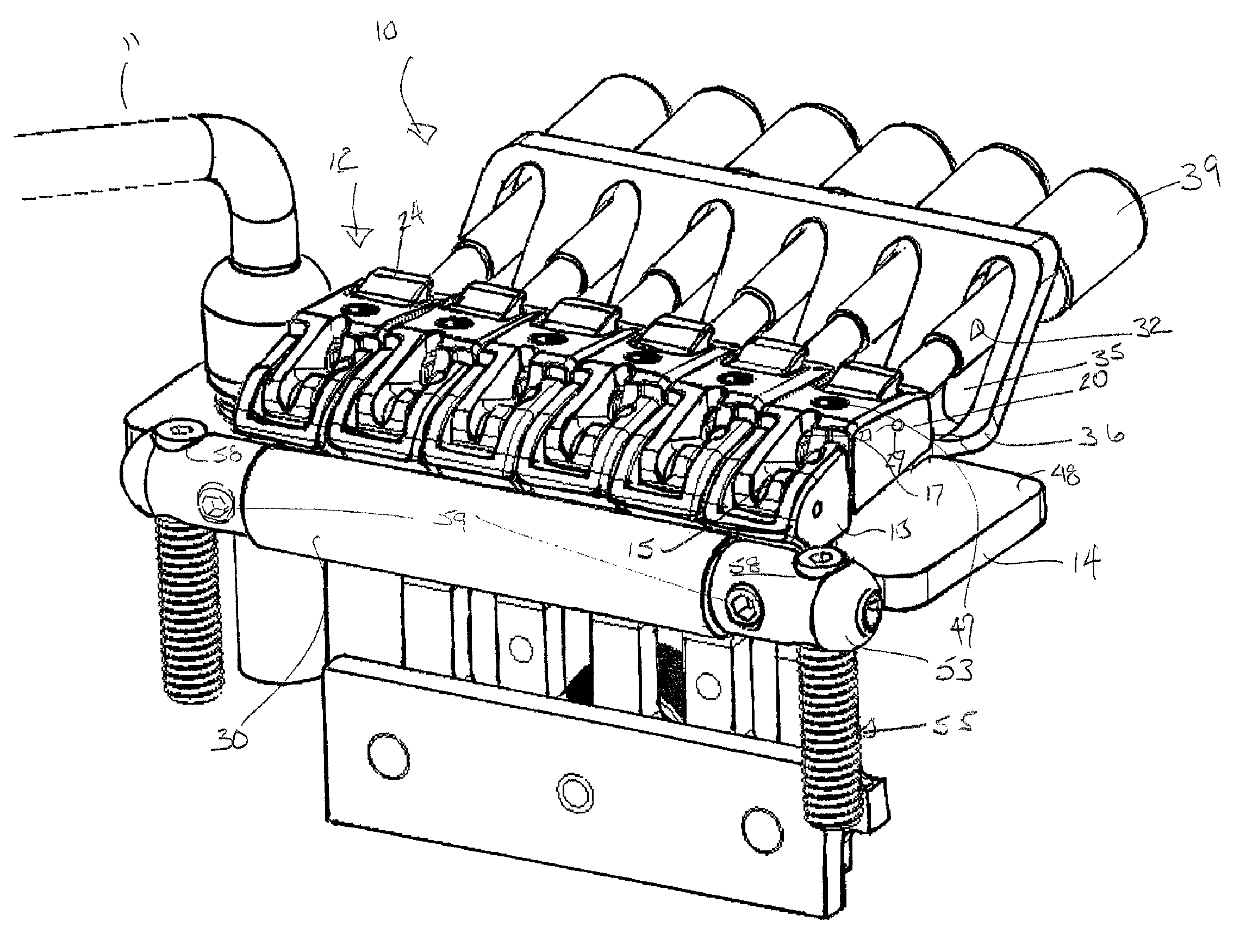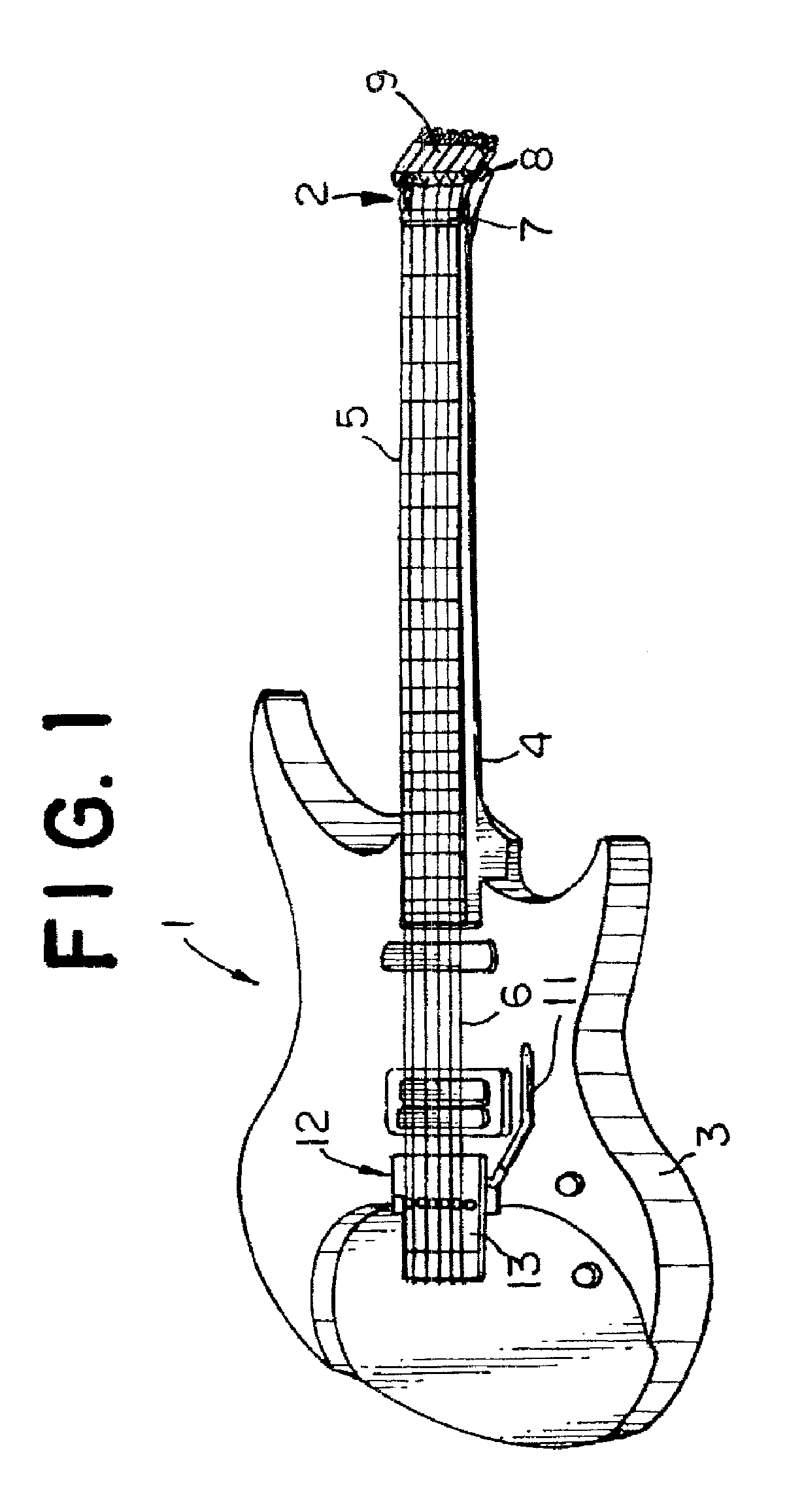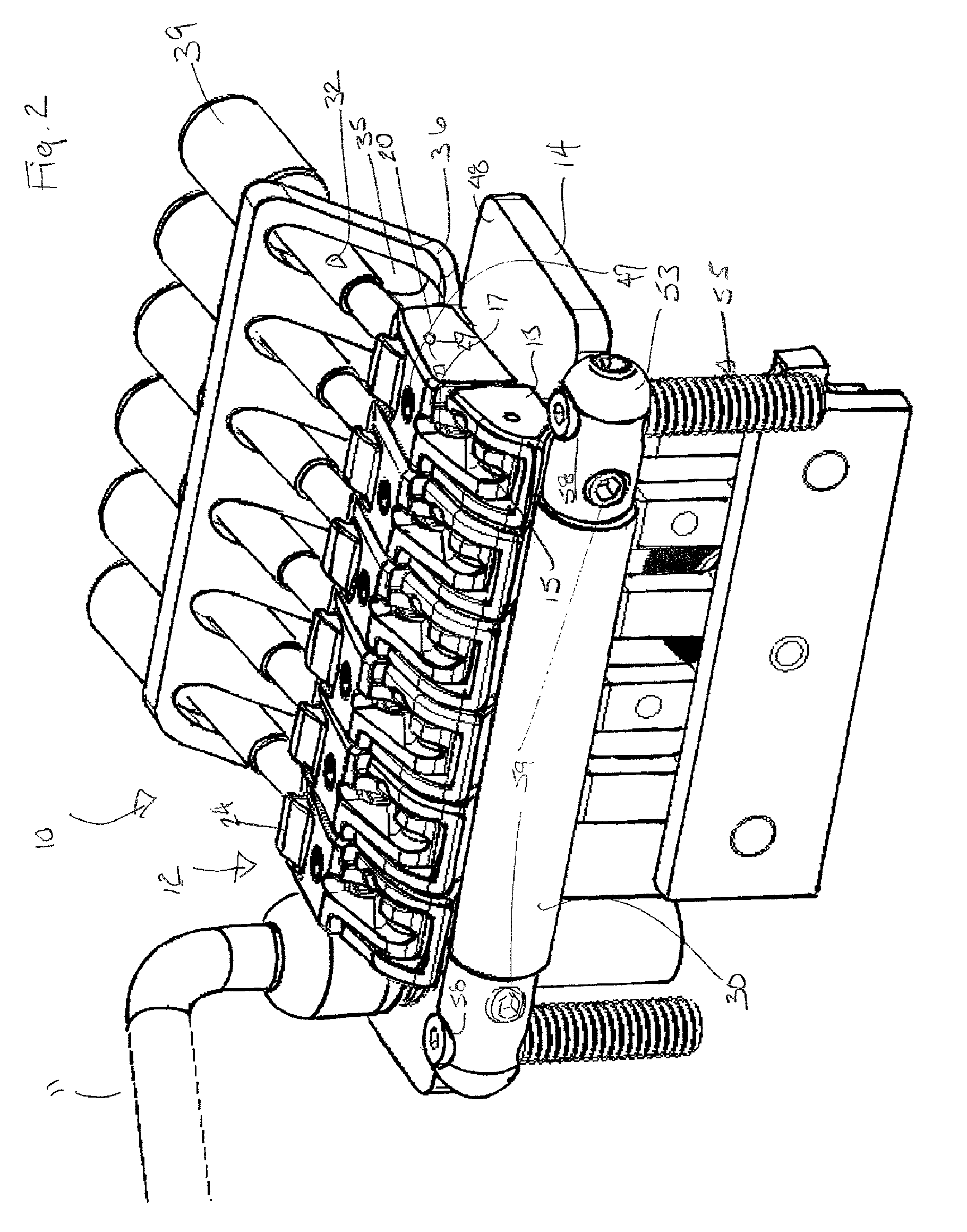Fine tuning means for fulcrum tremolo
a fulcrum tremolo and fine tuning technology, applied in the field of stringed musical instruments, can solve the problems of overall tuning going out of balance, pivot means being subject to wear, tremolo not always returning, etc., and achieve the effect of a wider range of installation possibilities
- Summary
- Abstract
- Description
- Claims
- Application Information
AI Technical Summary
Benefits of technology
Problems solved by technology
Method used
Image
Examples
Embodiment Construction
[0062]In FIG. 1, an electric guitar 1 is illustrated comprising a head 2 at one end, a body 3 at the other end, with a neck 4 extending between the head and the body. Six strings 6 extend from head 2 to body 3 over neck 4. Neck 4 forms fret board or fingerboard 5 for guitar 1. At head 2, each string 6 extends over nut 7 forming first critical point 8 for each of strings 6. Nut 7 is located at the transition of neck 4 to head 2. Each string 6 is secured on the head by a corresponding tuner 9. On the body 3, strings 6 are secured to fulcrum tremolo 10. Fulcrum tremolo 10 has arm 11 for pivoting the tremolo and providing the vibrato effect on the strings. Fulcrum tremolo 10 has six intonation modules 12, one for each string 6.
[0063]The intonation modules present improvements to the fine-tuning invention incorporating the function of the bridge element and tailpiece in its structure as well as the capacity to adjustably fix one end of the individual strings to the instrument at more tha...
PUM
 Login to View More
Login to View More Abstract
Description
Claims
Application Information
 Login to View More
Login to View More - R&D
- Intellectual Property
- Life Sciences
- Materials
- Tech Scout
- Unparalleled Data Quality
- Higher Quality Content
- 60% Fewer Hallucinations
Browse by: Latest US Patents, China's latest patents, Technical Efficacy Thesaurus, Application Domain, Technology Topic, Popular Technical Reports.
© 2025 PatSnap. All rights reserved.Legal|Privacy policy|Modern Slavery Act Transparency Statement|Sitemap|About US| Contact US: help@patsnap.com



